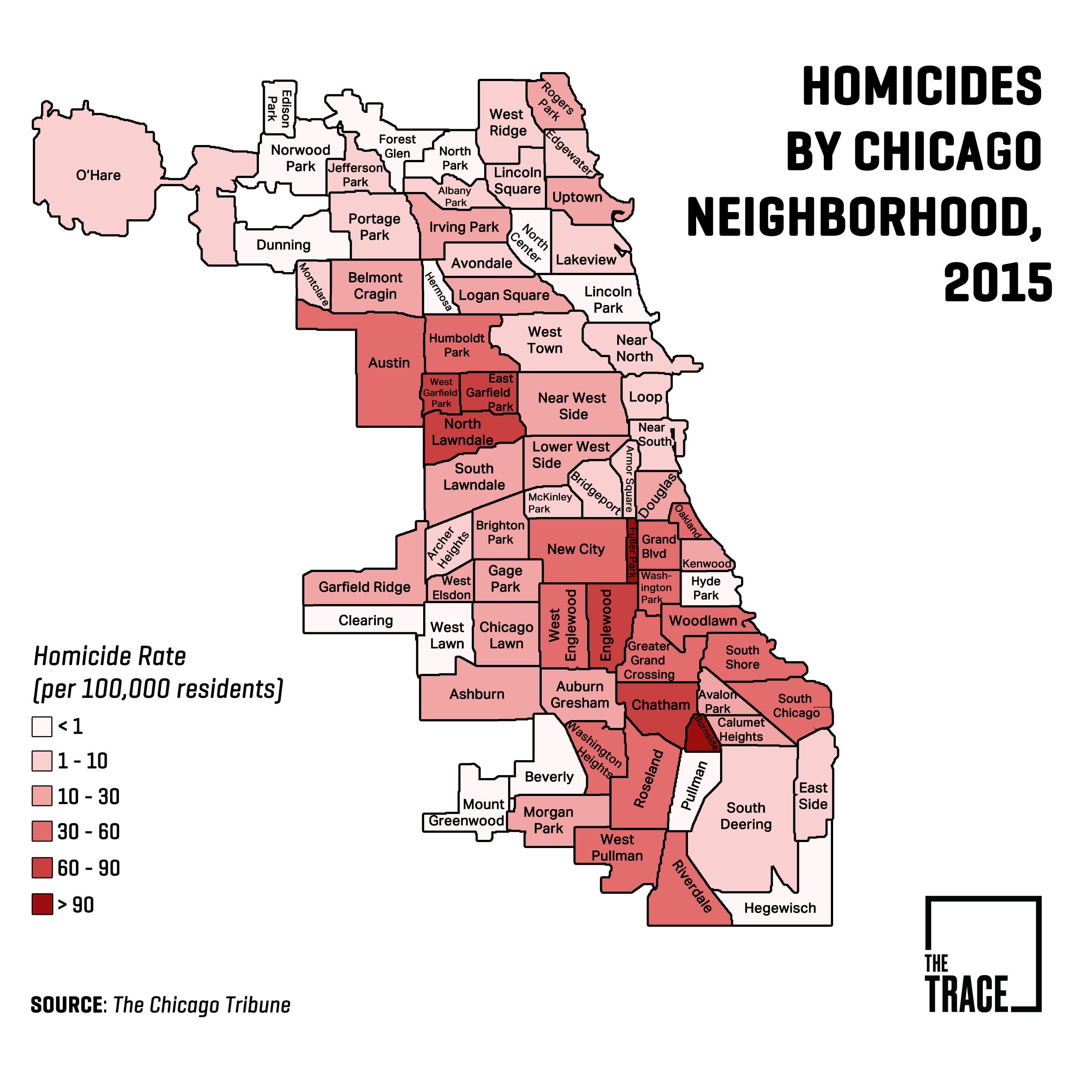On Thursday night in Chicago, I shared with a group of roughly two dozen community members what I’ve learned from my reporting on the illegal gun market in the United States. The gathering was hosted by City Bureau, a small Chicago-based journalism nonprofit, as part of its Public Newsroom series. The events are held every week with the goal of bringing together reporters and the public to encourage civic engagement.
Following my presentation, which you can listen to here, the audience of reporters, students, activists, and other community members engaged in conversation about what national media gets wrong about gun violence in Chicago.
One comment from an attendee especially resonated with me.
“People don’t understand Chicago; it really is the tale of two cities,” she said. “Really getting the lay of the land helps contextualize these stories.”
The attendee was emphasizing the need for hyperlocal reporting. Responsible coverage of gun violence in Chicago and in other cities requires an understanding of the stark differences in violent crime rates at the neighborhood level. National news outlets, attendees said, often overlook the local dynamics at play, giving the false perception that everyone in Chicago is equally exposed to gun violence, no matter where they live.
The term “murder inequality” is sometimes used to describe this disparity in exposure to gunfire. At The Trace, we have tried to focus attention on murder inequality, believing that it is key to spotlighting the disproportionate effects of gun violence on disadvantaged communities.
Take this example from a piece we published in 2016, by Trace contributor Daniel Key Hertz. In his reporting, Hertz points to two Chicago neighborhoods, Burnside and Fuller Park, where the homicide rate eclipsed 100 per 100,000 residents in 2015, more than five times the Chicago average.
There are many Chicago neighborhoods where the murder rate is near zero. But there are others where the murder rate is astronomically high. Failing to capture these differences obscures the crucial fact that violent gun crime varies even more within American cities than between them.
There are a handful of local outlets that do a great job of reporting on under-covered communities in Chicago, City Bureau being one of them. But last night’s event was a good reminder for national outlets, including The Trace, to always keep murder inequality in mind, especially when we are reporting on cities where we haven’t spent much time, and whose dynamics we are only beginning to grasp.
Without doing so, we risk missing the true story.


